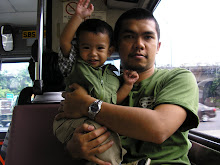
A bit about the M3 from Wikipedia and Pacific Rim Camera
The Leica M3 was a 35 mm rangefinder camera by Leica AG, introduced in 1954. It was a new starting point for Leitz, which until then had only produced screw-mount Leica cameras that were incremental improvements to its original Leica (Ur-Leica). The M3 introduced several features to the Leica, among them the combination of viewfinder and rangefinder in one bright window and a bayonet lens mount.
This was the first model of Leica to use a rapid lever advance instead of a knob. Early cameras were "double stroke", requiring two short pulls on the lever. After camera number 915,251, it was changed to a single stroke. The engineers thought that a single stroke would tend to tear out sprocket holes in the film.
Production started at camera 700,000, and very early cameras have many differences than later ones. Production ended at camera 1,158,995. It was the most successful model of the M series, with over 220 000 copies sold with 1968 as the last production year. Many people consider this is the finest rangefinder camera, or even camera of any sort ever built, not just for features and design, but for quality of construction as well.
A bit about my ill-fated M3
I can not say much about it right now. It is currently broken.



